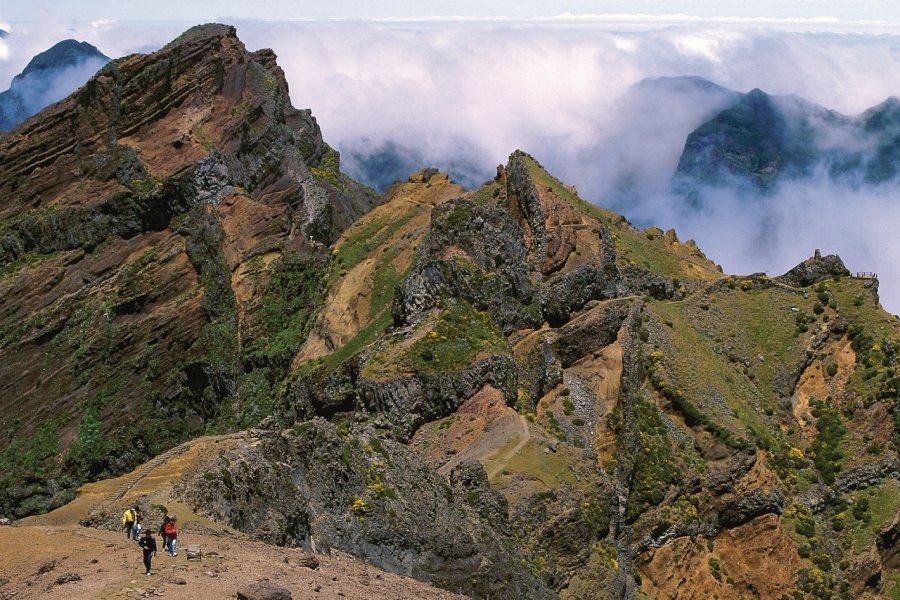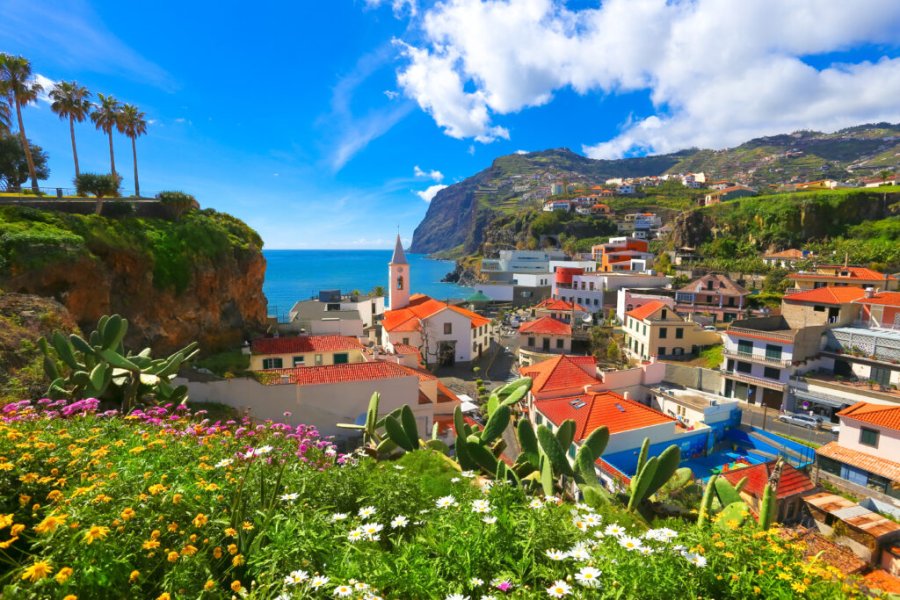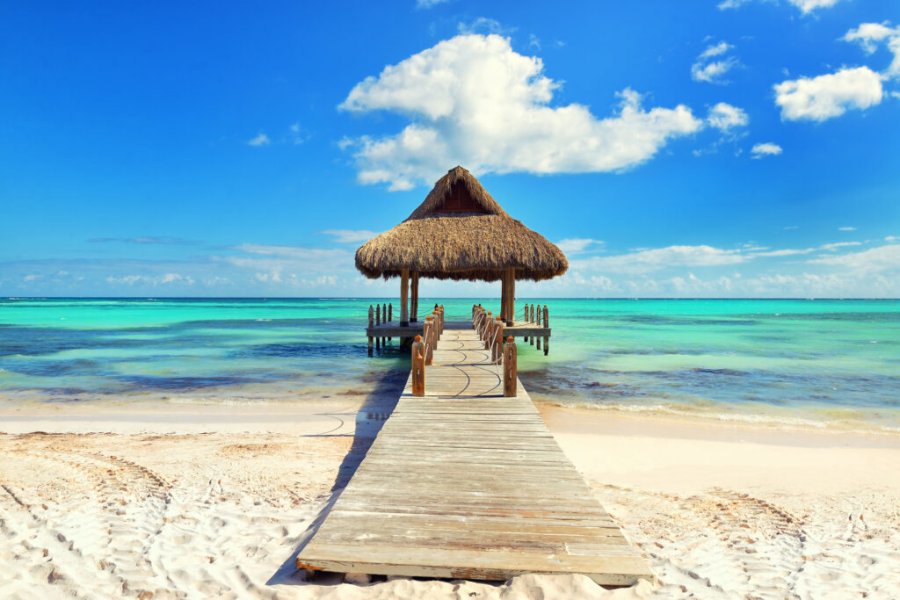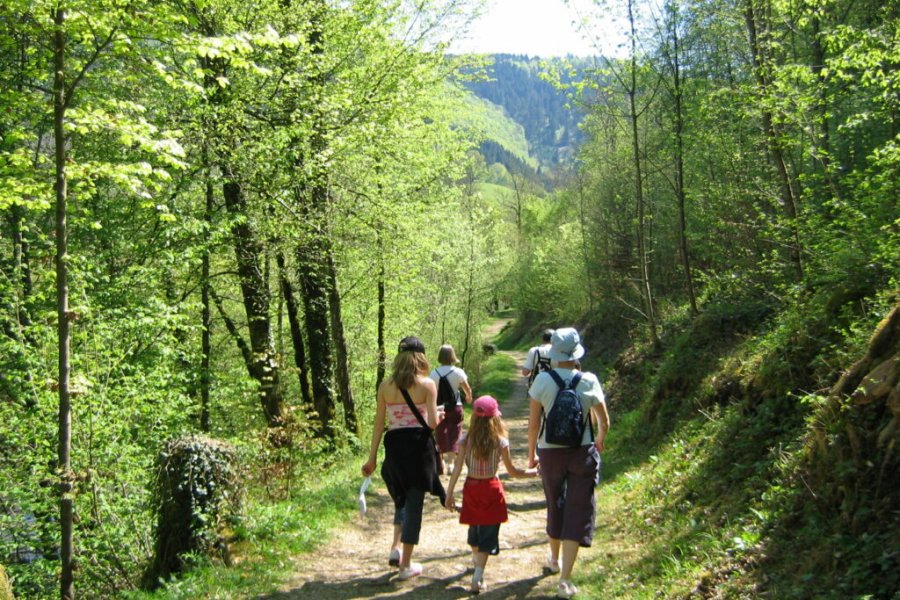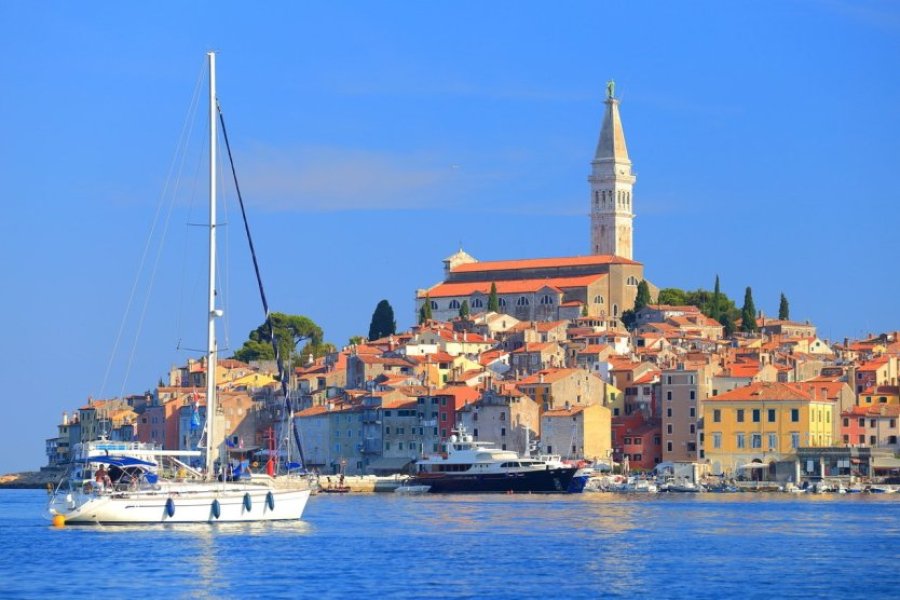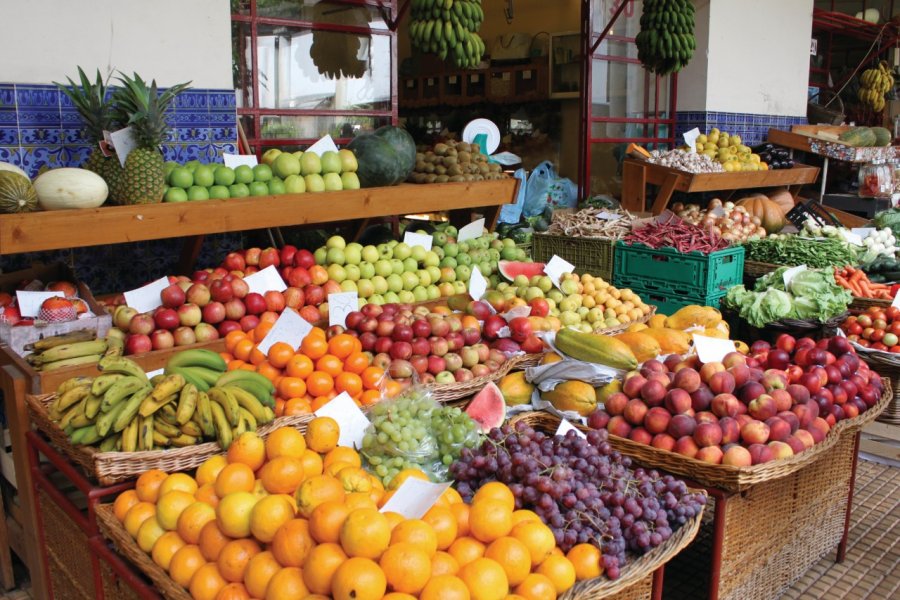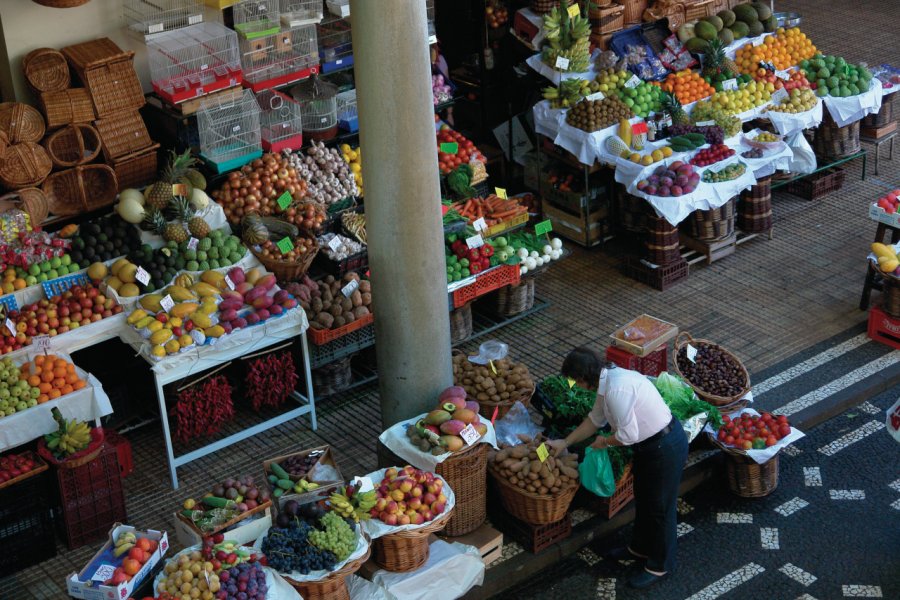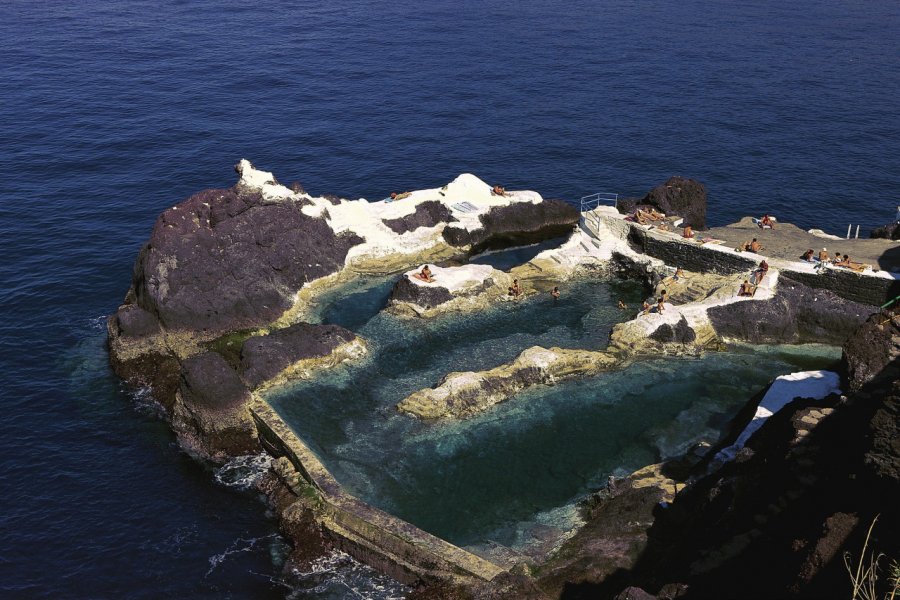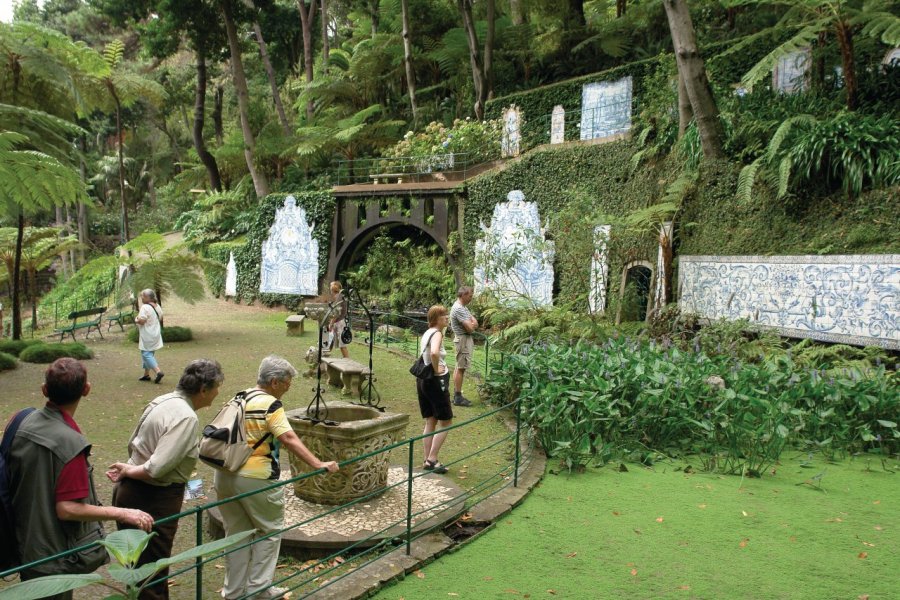Travel guide Madeira
The "Pearl of the Ocean" is made of a fertile land and a paradisiacal climate, that of an eternal spring, hence its superb flora. Funchal, a charming colonial-style capital with its small white-walled houses, is a long-standing stop on the way to the Americas. The city now vibrates with the constant flow of liners and tourists on the lookout for museums and churches, with an imperturbable sweetness of life... Madeira also unveils its wild coasts and its constellation of mountainous villages. Although the inhabitants defend a very island identity, one finds there the peasant and welcoming atmosphere so widespread in the countryside of continental Portugal . For swimming, the natural pools of Porto Moniz in the north of the island and the endless strip of white sand of Porto Santo, the neighboring island, are very pleasant. So many facets of this small Portuguese archipelago that you can discover even better by following the indications of the Madeira tourist guide. But in spite of its very touristy side, Madeira still conceals sites off the beaten track and a museum dedicated to the famous footballer Ronaldo, a local child!
What to see, what to do Madeira?
-
Book an activity
-
Customized travel
- The most beautiful cities Madeira
When to go Madeira ?
Thanks to its mild climate, Madeira can be visited all year round. The high tourist season is of course summer due to the seaside aspect of the island but the best time to go to Madeira is spring during the months of March, April and May, when Madeira is in full bloom and it is easy to understand why it is called the "Flower Island". If you go to Madeira at the end of February/beginning of March, you will probably have the chance to attend the Madeira Carnival; it's always a great time with flowered floats and extravagant costumes.
Suggested addresses Madeira
Travel Madeira
-
Find a hotel
-
Car Rental
-
International e-SIM package
-
Find a local agency
In recent years, the Madeira coast has changed its face. Fishing ports have been transformed into exciting little seaside resorts. But you will certainly not come to Madeira just to relax on its beaches or by its natural pools. Turn your back for a second to the ocean and, facing the green walls, ask yourself: what would Madeira be without its mountains and hiking trails? The Island is as beautiful at low altitude as it is high up, and we can only advise you to explore the interior of this garden, which is less crowded at a time when the summer sun is attracting crowds to the coast... You will have understood it, the richness of the island is revealed according to the marked out paths. Also, when organizing your stay, keep in mind that the distances are relatively short (allow an hour and a half to cross the island from east to west by the expressway).
Find unique Stay Offers with our Partners
How to go Madeira
How to go alone
Book early to get the best rates if you go during the summer as prices can double compared to the rest of the year. Locally, it is easy to organize your stay on your own but it is also recommended to book your hotels early during the high season to get the best rates.
How to go on a tour
Many tour operators offer Madeira tours. They are usually inexpensive and last 10 to 15 days. We recommend a tour that includes cultural visits in Funchal or in picturesque villages, seaside stops in Porto Santo for example and especially visits to natural sites with a hiking part. It would be a pity not to hike in Madeira because the landscapes are sublime and leave an unforgettable memory.
How to get around
There are several bus companies serving Madeira and they all pass through Funchal. It is quite easy to get around the island by bus. But if you want to go anywhere, the best thing to do is to rent a car, and you can easily find agencies in the capital. There are no trains in Madeira.
Featured articles Madeira
Discover Madeira
On the road to the New World, from primary forests to jagged coastlines, from very lively traditions to volcanic summits, plunge into the heart of this autonomous island region as peaceful as it is endearing. Discover the fascinating history of the Madeira Archipelago through the Great Portuguese Discoveries. Discover the secrets of its exuberant nature and the richness of its endemic flora and fauna (Madeira Petrel, Trocaz Pigeon, Monk Seal...). Salivate over its culinary specialities with exotic flavours, whether you bite into them with appetite or sip them in moderation. Discover the attractions of its colonial heritage, its magnificent quintas, charming houses. Understand also its current challenges, the role of tourism and the specificities of its legendary spring climate. In short, you will be given a portrait of the Madeira Archipelago, a prosperous garden embodied by its gentle way of life.
Pictures and images Madeira
The 12 keywords Madeira
1. #Azulejo
These glazed earthenware tiles are one of the hallmarks of Portuguese art. Originating in Morocco (the term azulejo comes from the Arabic al zulaydj, meaning "small polished stone"), they made their way to Andalusia via the "earthenware route", then to Portugal (where they are said to have seduced Manuel I during a visit to Spain).
2. #Bolo do caco

It's hard to miss Madeira's famous bolo do caco, a delicious round, flattened homemade bread containing sweet potato (grown in abundance on the Island). It is usually spread with garlic butter and served before the appetizer. It's also the basis of Madeira sandwiches: go for a prego especial (with an egg), our favourite!
3. #Embroidery
An age-old tradition in Madeira. Whether on canvas, linen, organza, shawl, handkerchief or tablecloth, the pieces reveal a delicacy and meticulous craftsmanship that has woven the reputation of Madeira embroidery across the borders. Bordal, established in 1962 in Funchal, is the best known.
4. #Flowers
Hydrangeas, anthuriums, magnolias, bougainvilleas, agapanthus or birds of paradise, in gardens, in the heart of forests, along roadsides... Everywhere on the island, flowers compose sublime bouquets. A plume of fascinating colors, exalted every spring during the Flower Festival that fills the streets of Madeira's capital.
5. #Exotic fruits
It's time to fill up on vitamins and tropical essences! The island is a fertile ground where many exotic fruits are cultivated. On the stalls of the farmers' markets, bananas, guavas, avocados, mangoes, kiwis, passion fruit, papayas and other lesser known fruits, such as anone or tamarillo, make your mouth water!
6. #Laurisilva

Madeira has the largest surviving primary laurel forest in Macaronesia (it exists only in Madeira, the Azores, the Canary Islands and Cape Verde). Its origin dates back to the Tertiary era. Listed as a World Heritage Site, it contains a unique ecosystem inhabited by many endemic species, such as the Madeira Trocaz pigeon.
7. #Levada

To cope with the uneven distribution of water resources on Madeira Island, the first settlers had a brilliant idea: to build a network of canals - levadas - capable of transporting water from the mountains to the arid lands to the south of the island. These canals are lined with signposted paths, making for memorable hikes.
8. #Manuélin
This Portuguese architectural style was born during the reign of King Manuel I (1495-1521) and was part of the period of the Great Discoveries. A counterpart to the late Gothic style, it draws its inspiration from the world of the sea, with complex sculptural features such as the armillary sphere, a navigational instrument and emblem of Manuel I.
9. #Poncha

Don't be fooled by the exotic and sweet aroma of this typical alcoholic drink of the archipelago. A real time bomb, originally made with rum (traditional on the island), lemon juice and honey. It is now made with a whole bunch of local exotic fruits (try the poncha de maracujá, it's a real hit!).
10. #Quinta
In Portugal, the term quinta refers to large agricultural estates consisting of several buildings. Madeira is home to many quintas, traditional residences that have been converted into charming hotels, wineries or museums, surrounded by magnificent ornamental gardens with endemic species and tropical plants.
11. #Rajão
A five-stringed instrument, traditional to Madeira, it would be the ancestor of the Hawaiian ukulele! In 1879, Madeiran migrants went to Hawaii to work in the sugar cane plantations and brought with them a kind of small guitar. The Hawaiians would have thereafter manufactured their own version, between the guitar and the rajão, called ukulele.
12. #Wine
Although the first vines were planted on the island as early as the 15th century, Madeira wine has since earned its letters of nobility. Even today, a process called estufagem is used to give this elixir its distinctive character. Several methods exist, including canteiro, which consists of aging the wine in the heat of the sun.
You are from here, if...
You can tell the difference between uma bica (an espresso), um carioca (an elongated coffee), uma chinesa (a large café au lait) and um garoto (a hazelnut coffee). A good idea to remember if you're a coffee fanatic...
You drink tap water. Yes, tap water is perfectly safe to drink. And to encourage consumers to drink tap water and reduce the production of plastic waste, in 2018 the government even launched a campaign praising the quality of the water coming out of its taps!
As you know, "Nikita" is not only the name of a 1990 Luc Besson film, but also that of a vanilla ice cream-flavored cocktail born in Câmara de Lobos in the 1980s. Its name is said to be inspired by the famous Elton John song.
You drive with skill (and without getting lost!) on the island's steep roads, day and night. Not always easy when you're not from around here (even with a GPS!).

